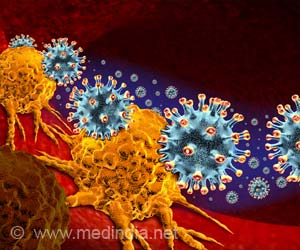A team of scientists at The Wistar Institute has decoded the structure of the active region of telomerase, an enzyme that plays a major role in the development of nearly all human cancers.
The structure of the active region of telomerase, an enzyme that plays a major role in the development of nearly all human cancers has been decoded by a team of scientists at The Wistar Institute.
The groundbreaking achievement paves the way for creation of new, broadly effective cancer drugs, as well as anti-aging therapies.Emmanuel Skordalakes, Ph.D., assistant professor in Wistar's Gene Expression and Regulation Program, who led the study, said that the findings should help researchers in their efforts to design effective telomerase inhibitors.
"Telomerase is an ideal target for chemotherapy because it is active in almost all human tumours, but inactive in most normal cells. That means a drug that deactivates telomerase would likely work against all cancers, with few side effects," Nature quoted Skordalakes, as saying.
The study explians the active region of telomerase and offers the first full-length view of the telomerase molecule's critical protein component.
It reveals details, at the atomic level, of the enzyme's configuration and how it works to replicate the ends of chromosomes - a process critical to both tumour development and the aging process.
In humans, telomerase adds multiple repeats of a short DNA sequence to the ends of chromosomes, known as telomeres, thus preventing damage and the loss of genetic information during cell division.
Advertisement
The enzyme is active in cells that multiply frequently, such as embryonic stem cells, but is switched off almost entirely in normal adult cells to prevent the dangers of runaway cell proliferation.
Advertisement
Besides its role in cancer, telomerase holds significant implications for the development of therapies to combat aging and other age-related diseases.
According to researchers, finding ways to activate telomerase under controlled conditions and allow some cells to begin dividing again could result in healthier, younger-looking tissue that lives longer.
Telomerase is a complex structure made up of multiple protein domains and a stretch of RNA, which contains the template the enzyme uses to synthesize telomeres.
The researchers used X-ray crystallography, a technique that analyses the diffraction patterns of X-rays beamed at crystals of a molecule, to determine the three-dimensional structure of the enzyme's active region-the catalytic component called telomerase reverse transcriptase protein, or TERT.
The researchers found surprising features, including the fact that the molecule's three domains are organized into a doughnut shape, an unexpected configuration. Knowledge of the structure allowed the researchers to create a model of the enzyme's function.
"It's extremely exciting. For the first time, we can see how telomerase assembles at the end of chromosomes to initiate telomere replication," Skordalakes said.
The study is published online August 31 in Nature.
Source-ANI
RAS/L











